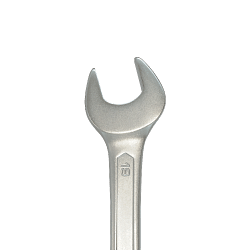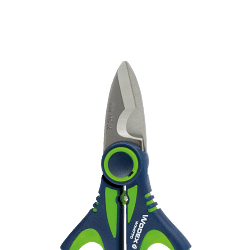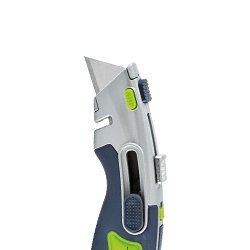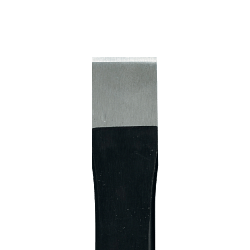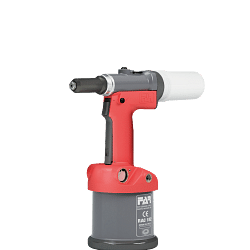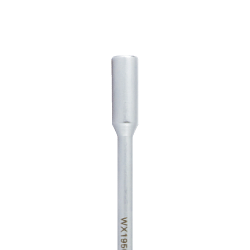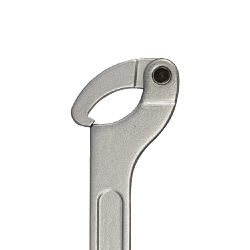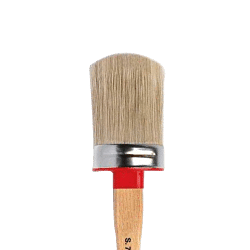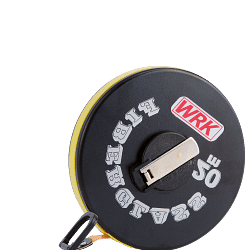You have no items in your shopping cart.
Register and use the discount code NEWWELCOME to get 10% off on your first purchase. GET DISCOUNT.
Register and use the discount code NEWWELCOME to get 10% off on your first purchase. GET DISCOUNT.
Register and use the discount code NEWWELCOME to get 10% off on your first purchase. GET DISCOUNT.
Free shipping in 24h from 200€
Catalogues
Customer service
How can we help you?
- Faq
- Customer service
02.927371
- Supporting big orders
02.38298620
-
info@linkindustrialtools.it
- Request assistance with form
Or contact us with the chat in the lower right corner
- All products
 Integral cutting tools
Integral cutting tools Turning tools
Turning tools Thread tools
Thread tools Thread tools
Thread tools- All products
- Thread inserts
 Milling cutters
Milling cutters Drilling tools
Drilling tools Drilling tools
Drilling tools- All products
- Indexable drill bits
- Indexable drill heads
 Clamping systems
Clamping systems Measuring and precision tools
Measuring and precision tools Measuring and precision tools
Measuring and precision tools- All products
- Digital calipers with readings to 0.01
- Analogue calipers
- Digital micrometers
- Analogue micrometers
- Bore gauges
- Snap gauges
- Digital gauges
- Analogue gauges
- Touch probes
- Zero setters and edge finders
- Inspection plates
- Altimeters
- Height gauges
- Squares and levels
- Threaded rings
- Gauge blocks
- Calibrated tapes and thickness gauges
- Digital and analogue hardness testers
- Roughness testers
- Microscopes, lenses and visors
- Digital thermo-hygrometer to measure moisture
- Reset benches
- Optical profile projector
- Professional, digital dynamometers
- Laboratory scales
- Digital amperometric pliers
- Thickness and adhesion gauges
 Hand tools
Hand tools Hand tools
Hand tools- All products
- Combination wrenches
- Spanners
- Hook wrenches
- Tubular wrenches
- Hexagon keys
- Torx wrench
- Socket wrenches
- Screwdrivers
- Torque wrenches
- Torque screwdriver
- Inserts and bits for screw drivers
- Tool trolleys
- Workshop pliers
- Wire strippers
- Cable strippers
- Cutting nippers
- Professional scissors
- Nippers
- Professional shears
- American or Swedish pipe wrench
- Adjustable wrench
- Pipe tools
- Pipe cutter for plumber
- Cutter
- Hacksaws
- Deburring tools
- Chisels
- Hammers and mallets
- Mechanical and conical pullers
- Clamps
- Tap wrenches and die stocks
- Riveters
- Flexometers
- Tape measures
- Markers
- Flat squares and rulers
- Professional dividers
- Professional protractors
- Brushes
- Lubricators and spray nozzles
- T-wrenches
- Reversible ratchets
 Abrasives
Abrasives Abrasives
Abrasives- All products
- Cutting discs
- Deburring grinding wheel
- Flap discs
- Fabric discs for surface treatment
- Abrasive fibre discs with Velcro
- Abrasive cloth in rolls, sheets and bands
- Flap wheels with pin and abrasive wheel with hole
- Abrasive wheels for buffing machines
- Abrasive spiral bands
- Abrasive brushes
- Flexible sanders
- Mounted grinding discs
- Polishing felt
- Solid carbide rotary cutters
- HSS rotary cutters
- Abrasive wheels for sharpening and grinding
- Diamond grinding wheels
- Grinding stone
- Diamond paste
- Abrasive stones
- Files and rasps
- Diamond files
- Grinders and polishing equipment
 Lubricants for machine tools
Lubricants for machine tools Lubricants for machine tools
Lubricants for machine tools- All products
- Water-miscible coolants
- Neat cutting oil
- Minimal lubrication systems
- Oil for guides and slides
- Drums of hydraulic oil fluid
- Anti-freeze for machine tools
- Air coolers
- Oil separator
- Powders and absorbents for oil
- Aspirators for oil mist
- Accessories for cooling lubricants
- Metal and mould protectors
- Grease and paste
 Chemical, adhesives and sealants
Chemical, adhesives and sealants Chemical, adhesives and sealants
Chemical, adhesives and sealants- All products
- Acrylic, cyanoacrylate and epoxy adhesives
- Guns and silicon sealant
- Threadlocker
- Sealants and retainers
- Release agents, lubricants and anti-seize
- Zinc spray and polishes
- Lubrication accessories
- Protections for maintenance
- Industrial Cleansing
- Handwash
- Industrial cloths and rags
- Welding machines
- Electrodes
- Clamps, shields and welding masks
- Antispatter
 Safety equipment
Safety equipment Pneumatics
Pneumatics Lifting systems
Lifting systems Workshop equipment
Workshop equipment Workshop equipment
Workshop equipment- All products
- Column and bench drills
- Accessories for lathes
- Band saws
- Cut-off machines
- Bench grinders
- Power tools
- Spare parts and accessories for Power Tools
- Saws and hole cutters: wood, metal and plasterboard
- Tapered cutters for sheet metal
- Industrial aspirators
- Fume aspirators
- Bench vices
- Technical lamps
- LED torches
- Industrial cable winders
- Trolley wheels
- Quick clamps
- Threaded inserts
- Control knobs
- Packaging accessories and material
- Belt sanders
- Electric tapping machines
 Furnishings and storage
Furnishings and storage Furnishings and storage
Furnishings and storage- All products
- Work benches
- Swivel chairs for office use
- Drawer units for workshops
- Industrial cabinets for warehouses and workshops
- Tool cabinets
- Security cabinets
- Changing room cabinets
- Containers for small metal parts
- Scrap holders
- Workshop trolleys
- Spill pallets for drum storage
- Shelves for warehouses and offices
- Cantilever shelving
- Aluminium ladders
- Modular plinths
- Units and cabinets for waste recycling
 Brand
BrandPromotions
 Bestseller
Bestseller- Catalogues
-
Catalogues
Customer service
How can we help you?
- Faq
- Customer service
02.927371
- Supporting big orders
02.38298620
-
info@linkindustrialtools.it
- Request assistance with form
Or contact us with the chat in the lower right corner
< Hand tools
- Home
- Hand tools
- Mechanical and conical pullers
Mechanical and conical pullers
Conical and mechanical extractors are essential tools in the mechanical workshop environment, where precision and reliability are prerequisites. These devices, designed to facilitate the removal of jammed or stuck components, are essential to ensure efficient and safe operations. In this in-depth look, we will explore the distinctive features of conical and mechanical extractors, how they work, the advantages they offer, and answer the most frequently asked questions that arise in the industrial context.
Characteristics and operation of conical and mechanical extractors
Bevel and mechanical extractors are tools designed to remove components such as bearings, gears, pulleys and other elements that may be difficult to extract manually. Tapered extractors, in particular, utilise a cone design that expands when force is applied, allowing the component to be firmly gripped and removed. This type of extractor is particularly useful when working with components that require an even and distributed grip.
Mechanical extractors, on the other hand, operate through a system of levers and screws that apply a controlled force to extract the component. These tools are ideal for applications requiring greater force or more precise control during extraction. Both types of extractors are available in different sizes and configurations, thus adapting to a wide range of industrial applications.
Advantages of using conical and mechanical extractors
The adoption of conical and mechanical extractors in machine shops offers numerous advantages. Firstly, these tools significantly reduce the risk of damaging components during the extraction process. Thanks to their ability to apply a uniform and controlled force, extractors minimise stress on components, preserving their structural integrity.
In addition, the use of conical and mechanical extractors improves operational efficiency. The ability to quickly and safely remove stuck components reduces downtime, increasing overall workshop productivity. This translates into time and cost savings, crucial elements in a competitive industrial environment.
Practical applications of conical and mechanical extractors
Conical and mechanical extractors find application in a wide range of industries. In machine shops, they are commonly used for the maintenance and repair of heavy machinery, where the removal of jammed components is a frequent necessity. In addition, these tools are essential in the automotive industry, where they are used to replace bearings and gears in engines and transmission systems.
In the aerospace sector, conical and mechanical extractors also play a crucial role. The precision required in this field makes it essential to use tools that can guarantee safe and damage-free extraction. Finally, in the manufacturing industry, these extractors are used for the maintenance of complex production lines and machinery, where speed and efficiency are crucial.
Frequently asked questions about conical and mechanical extractors
1. What is the main difference between a conical and a mechanical extractor?
The main difference lies in the operating mechanism. Tapered extractors use a cone design that expands to grip the component, while mechanical extractors use a system of levers and screws to apply the force required for extraction.
2. How do I choose the right extractor for my application?
The choice of extractor depends on several factors, including the type of component to be removed, the space available for the operation and the force required. It is also important to consider the compatibility of the extractor with the component material to avoid damage.
3. Do conical and mechanical extractors require maintenance?
Yes, like any mechanical tool, extractors require regular maintenance to ensure optimal performance. This includes cleaning, lubrication of moving parts and inspection for signs of wear or damage.
4. Can I use a conical or mechanical extractor on plastic components?
Although it is possible to use these extractors on plastic components, it is important to apply controlled force to avoid damaging the material. In some cases, it may be necessary to use specific inserts or adapters to protect the component.
5. What safety precautions should be taken when using extractors?
It is essential to wear personal protective equipment, such as gloves and safety glasses, when using extractors. Also, ensure that the extractor is correctly positioned and that the force applied is adequate to avoid accidents.
Conclusions
Conical and mechanical extractors are indispensable tools in machine shops and many other industries. Their ability to remove stuck components safely and efficiently makes them a valuable asset for any maintenance or repair operation. Understanding their features, benefits and practical applications is essential to realise their full potential and ensure successful industrial operations.
Read More Read LessCharacteristics and operation of conical and mechanical extractors
Bevel and mechanical extractors are tools designed to remove components such as bearings, gears, pulleys and other elements that may be difficult to extract manually. Tapered extractors, in particular, utilise a cone design that expands when force is applied, allowing the component to be firmly gripped and removed. This type of extractor is particularly useful when working with components that require an even and distributed grip.
Mechanical extractors, on the other hand, operate through a system of levers and screws that apply a controlled force to extract the component. These tools are ideal for applications requiring greater force or more precise control during extraction. Both types of extractors are available in different sizes and configurations, thus adapting to a wide range of industrial applications.
Advantages of using conical and mechanical extractors
The adoption of conical and mechanical extractors in machine shops offers numerous advantages. Firstly, these tools significantly reduce the risk of damaging components during the extraction process. Thanks to their ability to apply a uniform and controlled force, extractors minimise stress on components, preserving their structural integrity.
In addition, the use of conical and mechanical extractors improves operational efficiency. The ability to quickly and safely remove stuck components reduces downtime, increasing overall workshop productivity. This translates into time and cost savings, crucial elements in a competitive industrial environment.
Practical applications of conical and mechanical extractors
Conical and mechanical extractors find application in a wide range of industries. In machine shops, they are commonly used for the maintenance and repair of heavy machinery, where the removal of jammed components is a frequent necessity. In addition, these tools are essential in the automotive industry, where they are used to replace bearings and gears in engines and transmission systems.
In the aerospace sector, conical and mechanical extractors also play a crucial role. The precision required in this field makes it essential to use tools that can guarantee safe and damage-free extraction. Finally, in the manufacturing industry, these extractors are used for the maintenance of complex production lines and machinery, where speed and efficiency are crucial.
Frequently asked questions about conical and mechanical extractors
1. What is the main difference between a conical and a mechanical extractor?
The main difference lies in the operating mechanism. Tapered extractors use a cone design that expands to grip the component, while mechanical extractors use a system of levers and screws to apply the force required for extraction.
2. How do I choose the right extractor for my application?
The choice of extractor depends on several factors, including the type of component to be removed, the space available for the operation and the force required. It is also important to consider the compatibility of the extractor with the component material to avoid damage.
3. Do conical and mechanical extractors require maintenance?
Yes, like any mechanical tool, extractors require regular maintenance to ensure optimal performance. This includes cleaning, lubrication of moving parts and inspection for signs of wear or damage.
4. Can I use a conical or mechanical extractor on plastic components?
Although it is possible to use these extractors on plastic components, it is important to apply controlled force to avoid damaging the material. In some cases, it may be necessary to use specific inserts or adapters to protect the component.
5. What safety precautions should be taken when using extractors?
It is essential to wear personal protective equipment, such as gloves and safety glasses, when using extractors. Also, ensure that the extractor is correctly positioned and that the force applied is adequate to avoid accidents.
Conclusions
Conical and mechanical extractors are indispensable tools in machine shops and many other industries. Their ability to remove stuck components safely and efficiently makes them a valuable asset for any maintenance or repair operation. Understanding their features, benefits and practical applications is essential to realise their full potential and ensure successful industrial operations.


